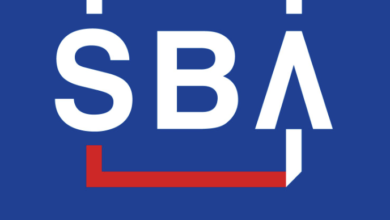The Application Process for a £1,500 Loan: What to Expect

Applying for a £1,500 loan can be straightforward if you’re well-prepared and informed about what to expect. Whether you need the funds for an emergency, a significant purchase, or to consolidate debt, knowing the steps in the application process can help you navigate it smoothly and increase your chances of approval. This comprehensive guide will walk you through the critical stages of applying for a £1,500 loan, from understanding the loan type to submitting your application and receiving your funds.
Types of £1,500 Loans
Before you begin the application process, it’s essential to understand the different types of loans available. A £1,500 loan can come in various forms, each with its terms, interest rates, and repayment structures. Some of the most common types include:
- Personal Loans: These are unsecured loans, meaning they don’t require collateral. Personal loans are often used for various purposes, from paying off credit card debt to funding a vacation or covering unexpected expenses. They typically have fixed interest rates and repayment terms, making them predictable and easy to manage.
- Payday Loans: These are short-term loans designed to be repaid by your next payday. They’re usually for smaller amounts, but some lenders may offer payday loans up to £1,500. While easy to obtain, they come with high interest rates and fees, making them costly if not repaid on time.
- Credit Union Loans: Credit unions often offer personal loans with competitive interest rates, especially for those with a good relationship with the institution. These loans can be a great option if you’re a credit union member.
- Guarantor Loans: A guarantor loan might be a viable option if you have a low credit score. This type of loan requires someone with good credit to co-sign the loan, guaranteeing that they will repay it if you fail to do so.
Checking Your Eligibility for a £1,500 Loan
Before applying for the £1500 loans, assessing your eligibility is crucial. Lenders typically have specific criteria that applicants must meet to be considered for a loan. These criteria may include:
- Credit Score: Your credit score is one of the most significant factors lenders consider. A higher credit score increases your chances of being approved and may help you secure a lower interest rate. Most lenders require a minimum credit score, which varies depending on the type of loan.
- Income and Employment Status: Lenders will also look at your income and employment status to determine your ability to repay the loan. Stable employment and a regular income stream are essential. Some lenders may require proof of income, such as pay stubs or bank statements.
- Debt-to-Income Ratio: This ratio compares your monthly debt payments to your monthly income. A lower debt-to-income ratio indicates more disposable income, making you a more attractive candidate for a loan.
- Residency and Age: You must be a UK resident, typically at least 18, to apply for a loan. Some lenders may have higher age requirements.
Gathering the Necessary Documentation
Once you’ve confirmed your eligibility, the next step is to gather the necessary documentation. Being prepared with all the required paperwork can speed up the application process and reduce the likelihood of delays. Standard documents that lenders may require include:
- Proof of Identity: A valid form of identification, such as a passport or driver’s license, is necessary to confirm your identity.
- Proof of Income: Lenders will want proof of your income to ensure you can repay the loan. This could include recent pay stubs, bank statements, or tax returns if you’re self-employed.
- Proof of Address: Utility bills, rental agreements, or official correspondence showing your current address are often required.
- Bank Account Information: If approved, lenders will need your bank account details to deposit the loan funds.
Read also: How Guaranteed Loans Can Help Small Business Owners
Comparing Lenders and Interest Rates
With your documents in hand, the next crucial step is to compare lenders and their interest rates. Not all lenders are created equal, and finding the right one can save you money in the long run. When comparing lenders, consider the following factors:
- Interest Rates: The interest rate determines how much you’ll pay in addition to the loan principal. Lower interest rates are generally better, but check whether the rate is fixed or variable.
- Fees: Some lenders charge fees for processing the loan, early repayment, or late payments. Be sure to factor these into your decision.
- Repayment Terms: Consider the loan’s repayment schedule. Some loans may require repayment within a few months, while others offer longer terms.
- Customer Reviews: Research customer reviews and ratings for the lenders you’re considering. This can give you insight into their customer service, ease of the application process, and overall satisfaction.
- Loan Approval Time: If you need the funds quickly, it is critical for a lender to approve and disburse the loan. Some lenders offer same-day or next-day funding, while others may take several days or weeks.
Submitting Your Loan Application
After choosing a lender, it’s time to submit your loan application. This step involves providing the lender with all the necessary information and documents. Here’s what you can expect during this stage:
- Filling Out the Application: Most lenders allow you to complete the application online, but some may require visiting a branch. The application will ask for personal information, employment details, income, and the amount you wish to borrow.
- Submitting Documentation: As mentioned earlier, you must submit proof of identity, income, address, and bank account information. Ensure all documents are current and legible to avoid delays.
- Credit Check: Once your application is submitted, the lender will perform a credit check. This helps them assess your creditworthiness and decide whether to approve your loan. A hard inquiry may temporarily lower your credit score, so be mindful of applying for multiple loans quickly.
- Waiting for Approval: After you submit your application and documents, the lender will review everything and make a decision. Depending on the lender, the approval process can take anywhere from a few minutes to several days.
- Receiving the Offer: If approved, the lender will provide a loan offer detailing the amount, interest rate, fees, and repayment terms. Review this carefully before accepting. If you agree with the terms, sign the agreement, and the funds will be transferred to your bank account.
Managing Your Loan Repayment
Once your loan has been approved and the funds are in your account, the final step is managing your loan repayment. Proper management is crucial to avoid late fees, penalties, and damage to your credit score. Here’s how to effectively manage your £1,500 loan repayment:
- Set Up Automatic Payments: Consider setting up automatic payments from your bank account to avoid missing a payment. This ensures your payments are made on time and can help avoid late fees.
- Create a Budget: Incorporate your loan repayment into your monthly budget. Ensure you have enough funds to cover the loan payment and other expenses.
- Monitor Your Loan Balance: Regularly check your loan balance and track how much you’ve paid off. This can help you stay motivated and make additional payments to pay off the loan faster.
- Communicate with Your Lender: If you encounter financial difficulties and are unable to make a payment, contact your lender immediately. They can offer a temporary forbearance or adjust your repayment plan.
- Avoid Taking on More Debt: While repaying your loan, avoid taking on additional debt. Focus on paying off your £1,500 loan before applying for other loans or credit cards.
Conclusion
Applying for a £1,500 loan doesn’t have to be a daunting experience. By understanding the types of loans available, checking your eligibility, gathering the necessary documentation, comparing lenders, and carefully managing your repayment, you can successfully navigate the process and secure the funds you need. Being well-prepared and informed is key to a smooth and stress-free loan application experience. With this comprehensive guide, you’re now equipped with the knowledge to confidently apply for a £1,500 loan and manage it responsibly.
